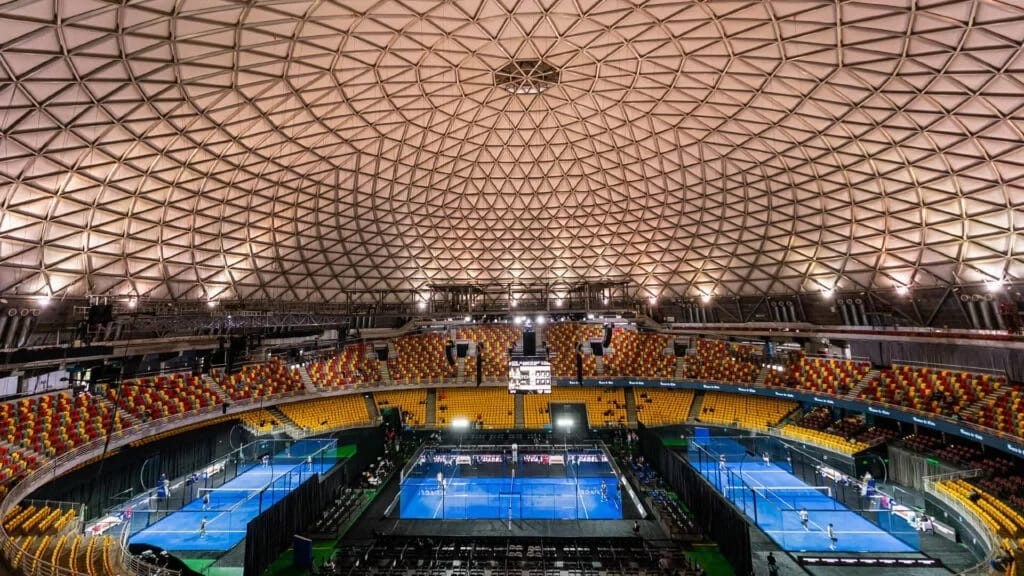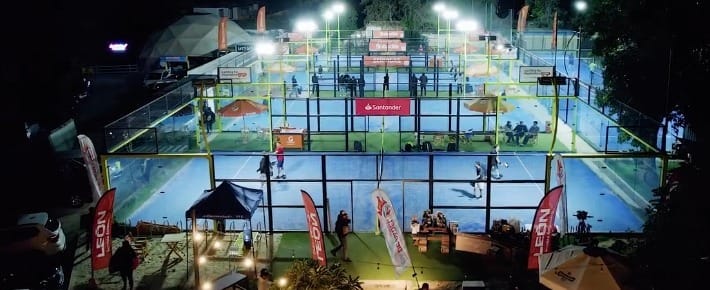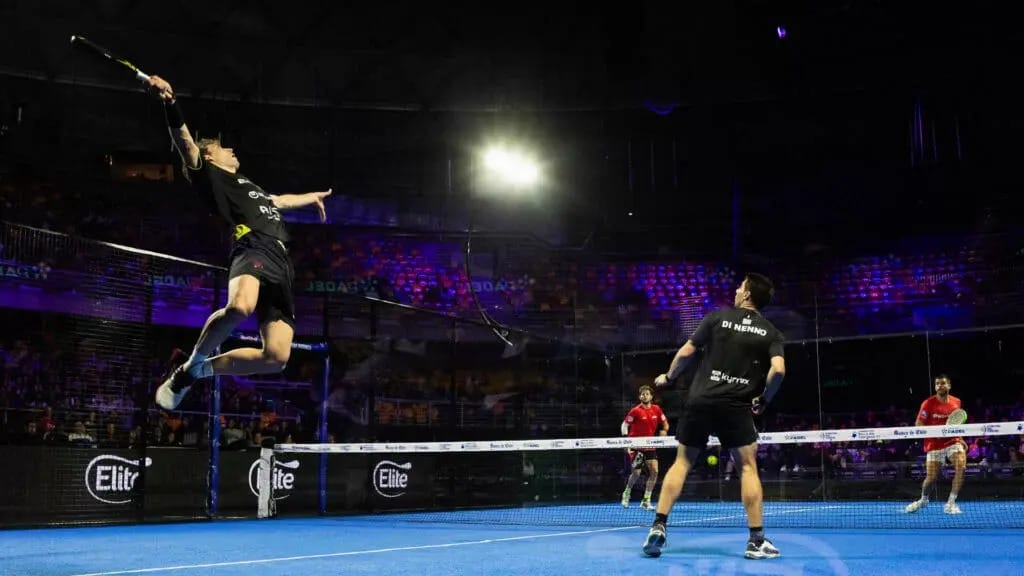- Padel Business Magazine
- Posts
- Chile Market Report: Competition hots up as market reaches maturity
Chile Market Report: Competition hots up as market reaches maturity
Competitive outlook: The padel market in Chile has entered a new stage of development amid a drop-off in demand and sluggish local economy.
With the third-highest number of courts in the Americas, second only to Argentina and Mexico, Chile offers significant opportunities for new investors and operators despite a slowdown over the past couple of years. After a boom in court openings driven by a surge in interest was followed by a reduction in demand, clubs are now operating in a more competitive environment, searching for new ways to attract and keep players. Market report by Andreia Nogueira.
Chilean padel has reached maturity after years of exponential growth since the Covid-19 pandemic, but there are still investment opportunities in this consolidated and modernised sports business sector, the third largest padel market in Latin America.
In March 2025, the International Padel Federation (FIP), stressed that, after Argentina and Mexico, Chile is “the American nation with the largest number of clubs and facilities, more than 620 and around 2,300 courts to play on, and several hundred thousand passionate amateur players”.
According to Statista, in 2024, Chile had the sixth largest number of padel courts worldwide, after Spain, Italy, Argentina, Sweden and the Netherlands. And in March 2025, for the second consecutive year, the capital Santiago welcomed the world’s best players as part of the Premier Padel Tour.
In Playtomic’s Global Padel Report 2024, Chile was ranked seventh in terms of growth in interest in the sport, just behind Italy. The ranking was based on Google searches as at May 2024 compared with the same point the previous year. However, in Playtomic’s Global Padel Report 2025 Chile did not make the top 15 countries ranked by this growth indicator, underlining the change in the market’s development.

In March 2025, for the second consecutive year, Santiago was on the Premier Padel circuit. Image credit: International Padel Federation (FIP).
With the most populous parts of Chile enjoying a pleasant Mediterranean climate, “Chile has a growing sports culture, heavily influenced by sports that combine accessible physical activity, socialisation, and logistical ease,” says Andrés Goñi, co-founder of Santiago-based +Deporte, a Chilean sports training and management organisation helping run Liga de Padel, Chile’s competitive but largely amateur padel league.
“Padel, with its lower initial technical demands [compared to tennis] and quick learning curve, has adapted perfectly to the Chilean lifestyle, especially in urban areas where space for traditional soccer fields is more limited,” explains Goñi. “Furthermore, the pairs-based game structure fosters a social dynamic highly valued in our culture.”
He notes that the sport started growing in Chile (population 19.6 million) during 2018, “but it consolidated explosively between 2020 and 2022”.
Since the pandemic brought “restrictions on mass contact sports like soccer, padel emerged as an ideal alternative” with “fewer players, distance between players, and outdoors”, he observes.
A lifebuoy for real estate
That is why, he adds, “soccer fields were replaced with padel facilities, where the administration, operation and occupancy rates are more cost-effective than soccer.”
Furthermore, he notes, there was a “real estate incentive offered by the development of padel courts”. That incentive applied both to existing sports venues and on vacant lots awaiting approval and financing for other real estate projects.

Matches take place organised by Liga de Padel, Chile’s competitive but largely amateur padel league. Image credit: Liga de Padel.
José Miguel Montes, a former tennis player who later represented Chile in world padel championships, adds that since the “economy slowed down” people found it hard to buy properties. Chile’s economy contracted by 0.3% in 2023 and 7% at the height of the pandemic in 2020, with inflation reaching 9.7% in 2020, and 7.58% in 2023; and interest rates 11.5% in 2023, falling to 5% in May 2025.
As “there was a lot of land”, the real estate sector “saw an opportunity” to rent places to padel clubs “for three or four years, while the economy recovered”, Montes explains.
At that time, they opened “two or three courts, a container office, and a small parking lot”, but with so much on offer for the current demand, this format of club is “obsolete today”, he says.
The future belongs to solid investments
To Montes, the future belongs to “comprehensive” clubs, that have good courts, even indoors, “good lighting, good locker rooms, good parking, hopefully a cafeteria, a restaurant, to generate a time after the match”, besides someone organising matches periodically and creating a community.
One example of this trend is the Las Condes complex at the Santiago-based private San Sebastián University Sports Club, now with 25 padel courts, after the inauguration of 10 first-class courts in April, which makes it “the largest padel complex in Latin America”, according to Chile media.
“Everyone is trying to do their best to create a better experience for the players”, notes Montes, stressing that “competition ultimately makes the company and the products stronger”.
This need to become more competitive in a market with less demand is heightened by Chile’s sluggish economy, with the International Monetary Fund (IMF) projecting 2% GDP growth for 2025, and in which some people cannot afford to play padel. Montes notes that during the pandemic, the government gave money to Chileans, which many spent on leisure and sports.
In March 2025, Rosanna Costa, governor of the Central Bank of Chile, warned that inflation remained “high” (the IMF projection for 2025 is 4.4%) and that a “complex” economic outlook was forthcoming.
That is also why “between 80 and 100 clubs have been closing nationwide”, says Montes, stressing that it was “unreal” to have 40 courts in a small town of 50,000 inhabitants anyway.
Goñi agrees that “after a boom between 2020 and 2022, 2024 saw a stabilisation and some decline”, since some centres closed, and bookings declined.
“Today, the market is becoming more professional: fewer low-quality offerings and more serious clubs with integrated services. In the medium term, stronger but moderate growth is expected, concentrated in urban and tourist areas,” he predicts.
Demand “distributed across many more clubs”
At the Santiago-based Easycancha sports venue booking platform, padel reservations increased from 783,153 in 2022 to 1.28 million in 2023, falling slightly to 1.2 million in 2024. Likewise, the average price for a booking went from US$17.10 (Chilean peso CLP 16,048) in 2022 to US$19.78 (CLP 18,564) in 2023 but decreased to US$17.56 (CLP 16,491) in 2024.
Given that the number of padel courts in Chile almost doubled from 570 in 2022 to 1,088 in 2024, as well as the number of clubs from 148 to 259, there were a lot more facilities chasing a stable number of bookings.
As Easycancha works with around 80% of padel courts in Chile, Daniela Baytelman, the company’s co-founder and CEO, says that this data is probably indicative. She explains that despite clubs seeing requests dropping, the demand “has been distributed across many more clubs” with players “playing in more places” and without the need of requesting a court so far in advance as before.
One strength, however, argues Baytelman, is that padel players are loyal to the sport, refuting the idea that tennis players are returning to tennis, explaining that “tennis players at heart do not really value padel”, but play it for other reasons like the social aspect of it. “Approximately between 15% and 20% of users” play both tennis and padel, she notes.
Therefore, Baytelman agrees that there is still room for investment in this sector, but with caution and a more detailed analysis before opening a new club. “There are sectors where there are still no padel clubs, because Chile is very large”, she says. It is 4,270km long, north-to-south, albeit only an average of 177km wide. “The country remains a leader in Latin America in padel”, she stresses.

Daniela Baytelman, co-founder and CEO of Easycancha, the Santiago-based sports venue booking platform. Image credit: Easycancha.
Other businesses opportunities
Furthermore, Baytelman says business has “room to invest in padel equipment, in racquets, in clothing, in things that cater to the athletes who play padel today, who are many”.
Montes, who is founding partner of the Padel Shop Chile, says that when the online shop was launched in July 2021 “there was a shortage of products” and “only a few stores, but today, with much greater competition, there are more price wars, so margins have been tightening”.
Still, its business has been growing, he says, from around €50,000 (CLP52.4 million; US$55,867) in revenue in the first six months of activity to €360,000 (CLP377.5 million; US$402,184) predicted for 2025, adding that it gets “a lot of new customers”. Besides, he explains, as their experience in padel grows so does their investment in more expensive equipment.
That said, Chile’s current weak economy means “more discounts or gifts” are needed "to close the sale”. On the plus side, because of exchange rate shifts and comparative pricing, “Chile is becoming cheap for Argentinians, so they travel a lot as tourists to buy things”, including products related to padel, he says.
As with clubs, “those stores that are more long-term-oriented” and invest in marketing and a community manager, shepherding online communities and fostering engagement, for instance, will survive, predicts Montes.

Action from the 2024 Santiago Premier Padel P1. Image credit: International Padel Federation (FIP).
From amateurism to professionalism
Goñi has also noticed a “budding professional path” in Chilean padel. “Some prominent players participate in international circuits like the World Padel Tour or Premier Padel. However, they are still few, and most must seek their own financing or sponsorship,” he adds.
The Chilean government “promotes sports in general, but specific support for padel is scarce”, therefore “most padel events and clubs operate with private funding”, he explains.
Nowadays, says Goñi, padel is mainly played by “young adults, 25 to 45 years old”, “primarily from middle and upper-middle classes” due to the costs, and “there is a growing balance between men and women”. Padel-playing celebrities such as former soccer player Jean Beausejour and former tennis player Fernando González are influencing the trend.
Goñi notes that padel is mostly played in the most populated areas, starting with the capital Santiago and the Valparaíso region, “although its expansion to smaller cities is growing, such as in Chillán, central Chile, where “indoor courts are increasing”.
Revenues could also come from tickets to watch matches, but in Chile “only large or national tournaments manage to attract an audience, which consists primarily of families and amateurs”, with tickets to major events ranging from CLP5,000 to CLP15,000 (US$5 to US$15)”, says Goñi, adding that only “major tournaments offer cash prizes”, which can reach from CLP1 million to CLP5 million (between US$1,000 and US$5,000).
Local Chilean championships, including qualifiers for international tournaments, are generating spectator interest, alongside other higher profile private events, such as the '2024 Mundosocios National Championship', for members of the Chilean Chamber of Construction (Cámara Chilena de la Construcción – CChC). Goñi stresses that while Liga de Padel has an amateur profile, it also works with several entities, such as CChC, creating “internal leagues for their members throughout the country”.
“A private inter-club league might spend between CLP10 million and CLP80 million [US$10,000 to US$80,000] annually” on courts rental, prizes, staff, marketing and administration, he says.
Attracting children to the sport might bring dividends too. While padel is not formally part of the national curriculum, “some private schools have begun to offer it as an extracurricular activity, and there are pilot projects to integrate it into municipal sports workshops”, such as those run by +Deporte, notes Goñi.
Montes predicts that Chilean padel has potential in the long run: “It's easy, it’s social, it’s friendly, for both children and adults. It’s very family-oriented, so it has several ingredients for a good future.”
Not yet a PBM subscriber? Sign up here for exclusive insights into the padel industry, delivered directly to your inbox
For more insight and discussion, follow us on LinkedIn and join the conversation
